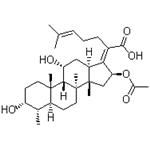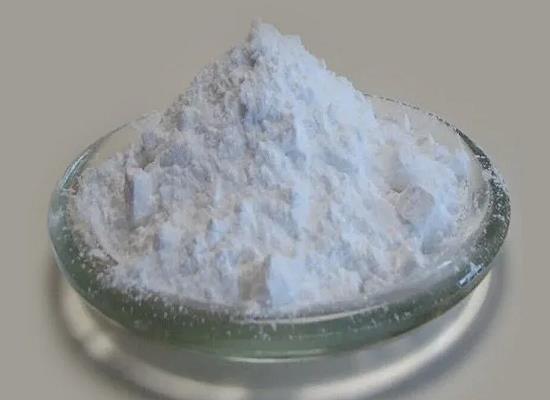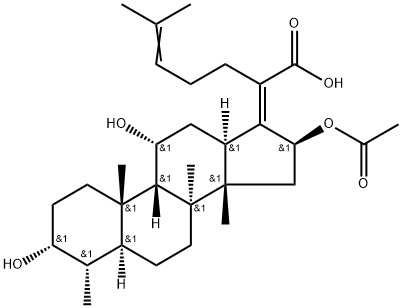Fusidine: Properties and Clinical Applications
Sep 23,2024
General Description
Fusidine is a unique antibiotic belonging to the fusidane group, effective in inhibiting bacterial protein synthesis. Its steroid-like structure allows for excellent skin penetration without the adverse effects typical of steroids. Topical formulations of fusidine have shown significant efficacy in treating skin and soft tissue infections, including impetigo, often outperforming other antibiotics in healing times and patient satisfaction. With a favorable safety profile, fusidine has a low incidence of allergic reactions and mild side effects, making it a preferred choice for managing infections caused by sensitive organisms, particularly Staphylococcus aureus, including methicillin-resistant strains.

Figure 1. Fusidine
Properties
Structure and Mechanism
Fusidine is the only commercially available member of the fusidane antibiotic group, renowned for its unique action of inhibiting bacterial protein synthesis. This occurs through interference with elongation factor G during the translocation step, making fusidine an effective antibiotic in the treatment of bacterial infections. The steroid-like structure of fusidine offers several benefits, notably its excellent skin penetration capabilities. Unlike steroids, fusidine does not exhibit anti-inflammatory activity or common adverse effects associated with steroid use. Research has demonstrated that fusidine effectively penetrates normal and damaged skin, as well as avascular areas, highlighting its potential in dermatological applications. 1
Efficacy and Therapeutic Use
The remarkable absorption properties of fusidine enable topical application to yield significantly higher local concentrations compared to systemic routes. This localized delivery allows for effective antimicrobial concentrations of fusidine to be attained, even in the deeper layers of the epidermis and dermis. Additionally, when administered orally, fusidine achieves substantial concentrations in plasma, serum, blister fluid, and interstitial dermal fluid. In vitro studies confirm that fusidine exhibits high antibacterial activity, particularly against Staphylococcus aureus, including methicillin-resistant strains (MRSA), and Staphylococcus epidermidis. It is also effective against certain Corynebacterium species. Consequently, fusidine is indicated for the treatment of mild to moderately severe primary and secondary skin and soft tissue infections caused by sensitive organisms, predominantly Staphylococcus aureus in clinical scenarios. 1
Clinical Applications
Topical Formulations
Fusidine has demonstrated significant efficacy in the treatment of skin and soft tissue infections (SSTIs) when used in topical formulations, specifically as a cream or ointment. Numerous studies have shown that both of these formulations are effective for managing SSTIs, as summarized by the research reviewed by Spelman. In various randomized trials, the clinical and bacteriological efficacy of fusidine has been comparable to other antibiotics. For instance, studies indicate that healing times with topical fusidine are notably faster than those achieved with oral antibiotics, underscoring the advantages of this topical treatment. Moreover, clinical comparisons between fusidine ointment and mupirocin ointment reveal that patients generally preferred fusidine due to its less greasy texture, which enhances patient satisfaction and adherence to treatment. 2
Impetigo Treatment
Fusidine has also been found to be particularly effective in treating impetigo. Research indicates that a higher percentage of patients responded positively to fusidine compared to a neomycin/bacitracin combination cream. Specifically, after seven days of treatment, 69% of the patients using fusidine were healed, compared to only 47% of those using the combination cream. The Cochrane review highlights that topical fusidine is equally or more effective than oral antibiotics for limited cases of impetigo. Systematic reviews support this by recommending topical agents like fusidine for seven days in similar cases. Unlike mupirocin, which is often reserved for eradicating nasal MRSA carriage, fusidine affords better tolerability, leading to potentially higher compliance rates among patients. 2
Safety Profile and Tolerability
The safety profile of fusidine is another compelling aspect of its clinical application. Adverse events associated with topical antibiotics are often related to hypersensitivity, however, fusidine has a low sensitizing potential, with clinical experience indicating that side effects are mild and infrequent. Recent safety assessments confirm the overall good tolerability of fusidine formulations. Specific studies have identified a low incidence of allergic reactions to fusidine, with patch tests indicating a much lower allergenic potential compared to other common topical antibiotics. Moreover, historical data show no increase in the frequency of allergic reactions since the 1980s, despite increased use of fusidine. Although rare, some cases of skin reactions have been documented, typically occurring in patients with chronic inflammatory conditions. Nonetheless, the low allergenic potential makes fusidine a preferred choice in the management of skin infections. 2
References:
[1] WILKINSON. Fusidic acid in dermatology[J]. British Journal of Dermatology, 2010, 139 s53: 1-40. DOI:10.1046/j.1365-2133.1998.1390s3037.x.
[2] HELMUT SCH?FER L S. Fusidic acid in dermatology: an updated review.[J]. European Journal of Dermatology, 2010, 20 1. DOI:10.1684/ejd.2010.0833.
- Related articles
- Related Qustion
- Fusidic acid:Chemical properties,Uses,Mechanism of action and Side effects Jun 19, 2025
Fusidic acid, a narrow-spectrum antibiotic, is used both systemically and topically to treat primary skin infections, including impetigo.
- The steroid antibiotics---?Fusidic acid Mar 18, 2022
Fusidic acid was developed by Leo Laboratories in Copenhagen and obtained from the fungus Fusidium coccineum.
1,7-Dimethylxanthine is a naturally occurring alkaloid compound that can enhance alertness and reduce drowsiness.....
Feb 27,2025APIBisoprolol Fumarate, a selective beta-1 blocker for hypertension and heart failure, is evaluated for stability and compatibility in formulations using HPLC for safety and efficacy.....
Sep 23,2024APIFusidic Acid
6990-06-3You may like
- Fusidine,Fusidic acid
-

- $0.00 / 10g
- 2025-07-11
- CAS:6990-06-3
- Min. Order: 10000g
- Purity: 99.0%min. HPLC
- Supply Ability: 1000kg
- Fusidine
-

- 2025-07-11
- CAS:6990-06-3
- Min. Order:
- Purity: 0.99
- Supply Ability:
- Fusidic Acid
-

- $0.00 / 25Kg/Bag
- 2025-07-11
- CAS:6990-06-3
- Min. Order: 2Kg/Bag
- Purity: 97.5% up / EP
- Supply Ability: 20 tons






